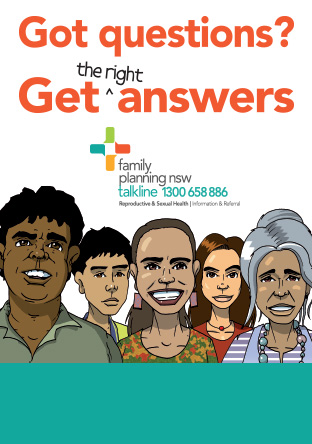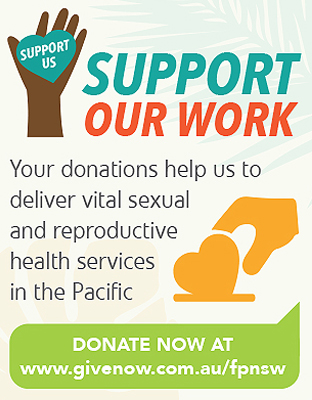
Family Planning NSW has released our 2021 Sexual and Reproductive Health and Rights and the Sustainable Development Goals report, which found we cannot meet the 2030 Agenda for Sustainable Development without realising the sexual and reproductive health of all people.
The report outlines 8 sexual and reproductive health and rights (SRHR) strategies and provides 22 concrete recommendations to the Australian Government that will help Australia and the Pacific achieve a more sustainable future.
The report is framed around the six Sustainable Development Goals (SDGs) being reviewed at the United Nation's High Level Political Forum in July 2021. These goals are:
- Goal 3: Ensure healthy life and promote well-being for all ages
- Goal 8: Promote sustained, inclusive and sustainable economic growth, full and productive employment and decent work for all
- Goal 10: Reduce inequality within and among countries
- Goal 13: Take urgent action to combat climate change and its impacts
- Goal 16: Promote peaceful and inclusive societies for sustainable development, provide access to justice for all and build effective, accountable and inclusive institutions at all levels
- Goal 17: Strengthen the means of and implementation and revitalize the global partnership for sustainable development
Family Planning NSW recognises sexual and reproductive health as a human right, with significant implications for our cities, economies and overall wellbeing.
We believe universal access to SRHR can help address complex global issues like poverty, gender inequality and climate change. SRHR programs, including the provision of contraception, STI diagnoses and treatment and the elimination of cervical cancer, are vital to better our social, economic and physical environments.
Below are Family Planning NSW's recommended SRHR strategies, and the SDGs they promote:
| 1. Increase access to long-acting reversible contraceptives | SDGs 1, 3, 5, 8, 10, 13, 16 |
|---|---|
| 2. Eliminate cervical cancer | SDGs 1, 3, 5, 10 |
| 3. Invest in comprehensive sexuality education | SDGs 1, 3, 4, 5, 10 and 16 |
| 4. Promote gender equality and end violence against women | All SDGs as is a cross-cutting issue |
| 5. Promote access to sexual and reproductive health services for vulnerable groups | SDGs 1, 3, 4, 5, 10, 11 |
| 6. Improve access to abortion care | SDGs 3, 5, 8, 10 |
| 7. Improve sexual and reproductive health data collection | SDGs 3, 16, 17 |
| 8. Contribute to the evidence and address the links between climate change and SRHR | SDGs 3, 5, 13, |
This is the fourth Sustainable Development and SRHR report we have produced, but it marks the first time we have included a strategy about climate change. While climate change can act as an accelerator for existing health vulnerabilities, unmet need for family planning and rapid population growth can also accelerate the impacts of climate change.
We call for enhanced evidence and collaboration in this field of study. Further research could inform development programs overseas and make the case for embedding SRHR funding within climate change grants.
The report also highlights the importance of comprehensive sexuality education (CSE), calling on the Australian Government to develop a national CSE curriculum that is aligned with the 2018 UNESCO technical guidance on sexuality education, is well-resourced, and consistently delivered.
Australia must do more to close the gap for vulnerable and marginalised communities at home, and rise to support our neighbours in the Pacific to embed sexual and reproductive health and rights into their national policy and practice.


